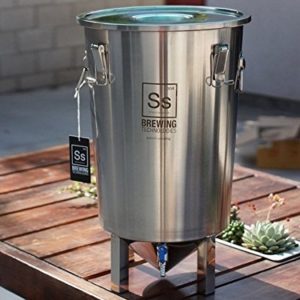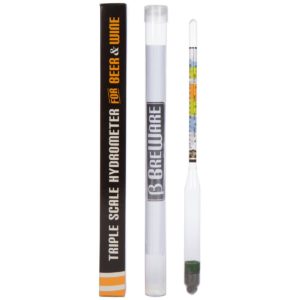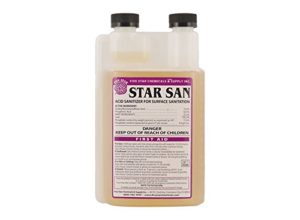There is perhaps no more important step in the brewing process than fermentation. In order for our readers to get the best results out of the fermentation process, we have compiled a list of the top 5 things the home brewer needs to know (and have) to have a successful formation process so you can follow the best home brewing recipes out there.
-
Get the Right Home Brewing Fermenter Equipment
In order to get your yeast to perform a healthy and sanitary fermentation, you will need a few key pieces of kit: a primary fermentor, blow-off assembly, siphon, and even a secondary fermenter if you’re fancy.
Do yourself a favor and grab a Stainless Steel Brew Bucket Fermenter from Brewing Technologies, its the best in the game right now.
Price – $199
This thing is a straight beast. Its made from 304 SS, the best material for sanitation. It holds 7 Gallons of juice. The best thing about this fermenter? It can be stacked during use with other like model fermenters, saving space for those of us who are short on square footage.
-
Check Your Gravity
A good rule of thumb for any brewer to follow is to measure your original gravity before pitching your yeast. Also measure gravity any time you transfer your beer, whether it be to another container or during the bottling process. For this crucial task, use a hydrometer like the one from BetaBar BreWare ($11). Its easy to use, easy to read, and comes ambien with a flawless accuracy guarantee.
Price – $11
- Brew in an Easily Cleaned Area
Fermentation can be…violent. If you airlock is not working properly it can be very easy to have an explosion. Watch your bubbles to make sure the specific gravity is stable and the cap foam has subsided before continuing with the brewing process. - Use a Secondary Fermenter
As your beer ferments, your primary fermenter will fill with “trub.” Trub is a mixture of grain and hop particles, as well as dead yeast cells, that can give your beer some desirable flavor notes. However, left to long and the trub will give your beer some very undesirable flavor notes. In order to avoid such a fate, siphon your brew into a secondary fermenter, leaving behind the trub in the primary fermenter.
- Sanitize EVERYTHING
When you transfer you brew to any new container, make sure that every piece of equipment the liquid touches is sanitary. This means that before you siphon your beer into a secondary fermenter, be sure to sanitize your auto-siphon, carboy, airlock and stopper, as well as any tubing that is used in the process. The best sanitizer on the market today is the Star San product ($20), use it with confidence.
Price – $20




